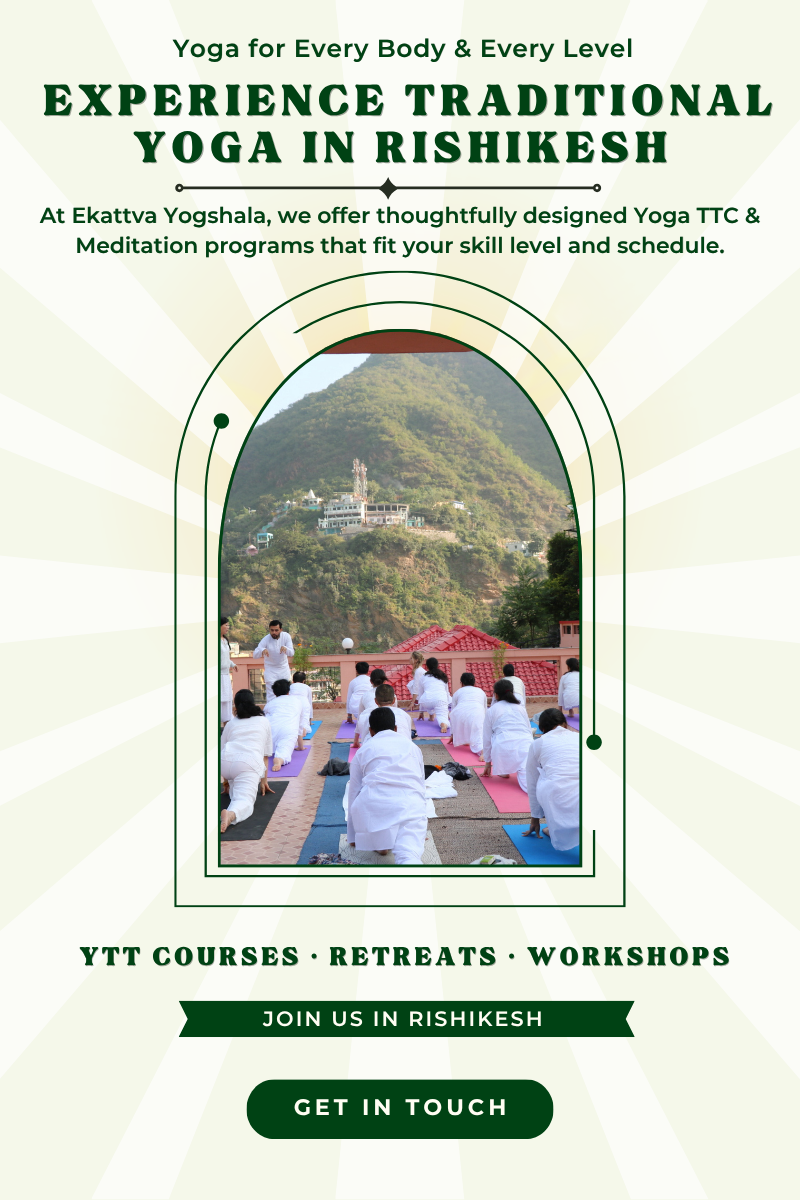Bandhas For Beginners: Everything Covered About This Yoga Concept
A lot of students who join our yoga retreats and teacher training program in Rishikesh, India often ask us about bandhas. Though we are always glad to explain it to students during classes, we feel that many people across the globe may also want to learn about it. That’s the reason why we decided to create this post.
Today, Ekattva Yogshala - an alliance-certified yoga ashram in Rishikesh - will tell beginners everything important about bandhas yoga.
Let’s understand the meaning of bandhas first!
What is Bandhas?
Bandhas is a Hatha yoga technique that allows practitioners to seal the flow of energy in and to a specific part of their bodies temporarily. Referred to as “lock” or “closed” in English, it is created when a sphincter and its related muscles are contracted. Bandhas, when released, bolster circulation, promotes blood flow, expel dead cells, and rejuvenate and strengthen organs in the targeted area.
What is the Purpose of Bandhas in Yoga?
To clearly understand the purpose of bandhas in yoga, one needs to get familiar with Prana Shakti. It is a primordial cosmic energy that governs all physical functions. Prana Shakti relies on Pingala Nadi - an origin point of pranic energy that runs the length of the spinal cord. Bandhas allows you to lock that vital energy into certain parts of the body.
Practitioners use this yoga concept to achieve the following purposes:
Purification
Eliminating blockages for better energy flow
Preventing pranic energy from leaking out of the body
Veering prana from energy-rich regions to energy-deprived body areas
Invigorating chakras to initiate Kundalini awakening
Harmonizing and balancing the self
Everything you need to know about New Year’s yoga retreat in Rishikesh
What are Different Types of Bandhas?
There are six types of bandhas in Hatha yoga - 2 minor, 3 major, and 1 bandha. Here’s the breakdown of each type:
Mula bandha: Also called root lock, Mula bandha allows practitioners to direct energy flow to the rectum for stimulating pelvic muscles and urogenital organs.
Jalandhara bandha: Jalandhara bandha hinders Prana flow through channels in the neck area. Yogis generally combine the throat and chin lock (English name) with other locks to relax and overcome stress.
Uddiyana bandha: Sometimes referred to as false inhale, Uddiyana bandha involves lifting the diaphragm. Yoga practitioners also consider this lock to be a natural remedy for fixing stomach upsets and abdominal pain. Some even perform it to stimulate digestion.
Hasta bandha: Hasta bandha (hand lock) is a minor bandha performed to eliminate wrist pain during certain yoga positions including downward dog or crow pose. It also helps people develop strength and comfort.
Pada bandha: Yogis around the world refer to Pada Bandha as foot lock. It helps practitioners in connecting their bodies with mother earth.
Maha bandha: Also called the final seal, the Maha bandha is considered a superlative lock. One can engage in it only after simultaneously activating three major bandhas i.e. Mula, Jalandhara, and Uddiyana.
Above is everything you need to know about bandha yoga. These locks are really great tools to gain optimal health and vitality. But since there are physical and energetic aspects to bandha, we highly suggest practicing them under the guidance of highly experienced and skilled yoga teachers.
Join Ekattva Yogshala’s 200 hour yoga teacher training in Rishikesh if you want to learn about these locks as well as Hatha yoga philosophy in a thorough manner.
Got any queries to ask? Send them to info@spiritualpunditz.com and have them answered by our yoga experts.
Also read:
Beginners guide to ashtanga yoga practice
Best supine poses for practitioners
Set yoga foundation with the best offline & online retreats
Everything about online breathwork program
Join retreats in Rishikesh to learn yoga and meditation basics



